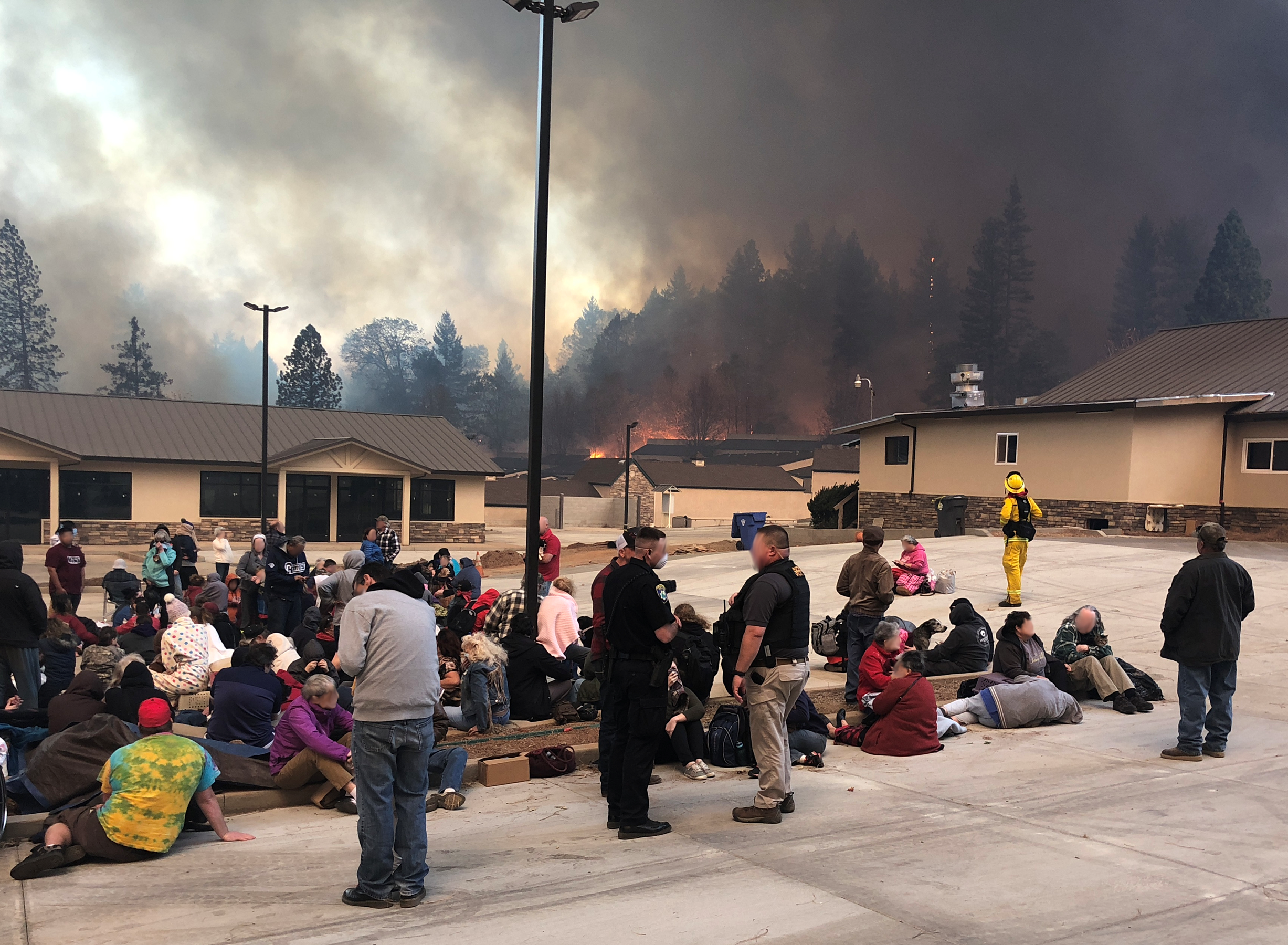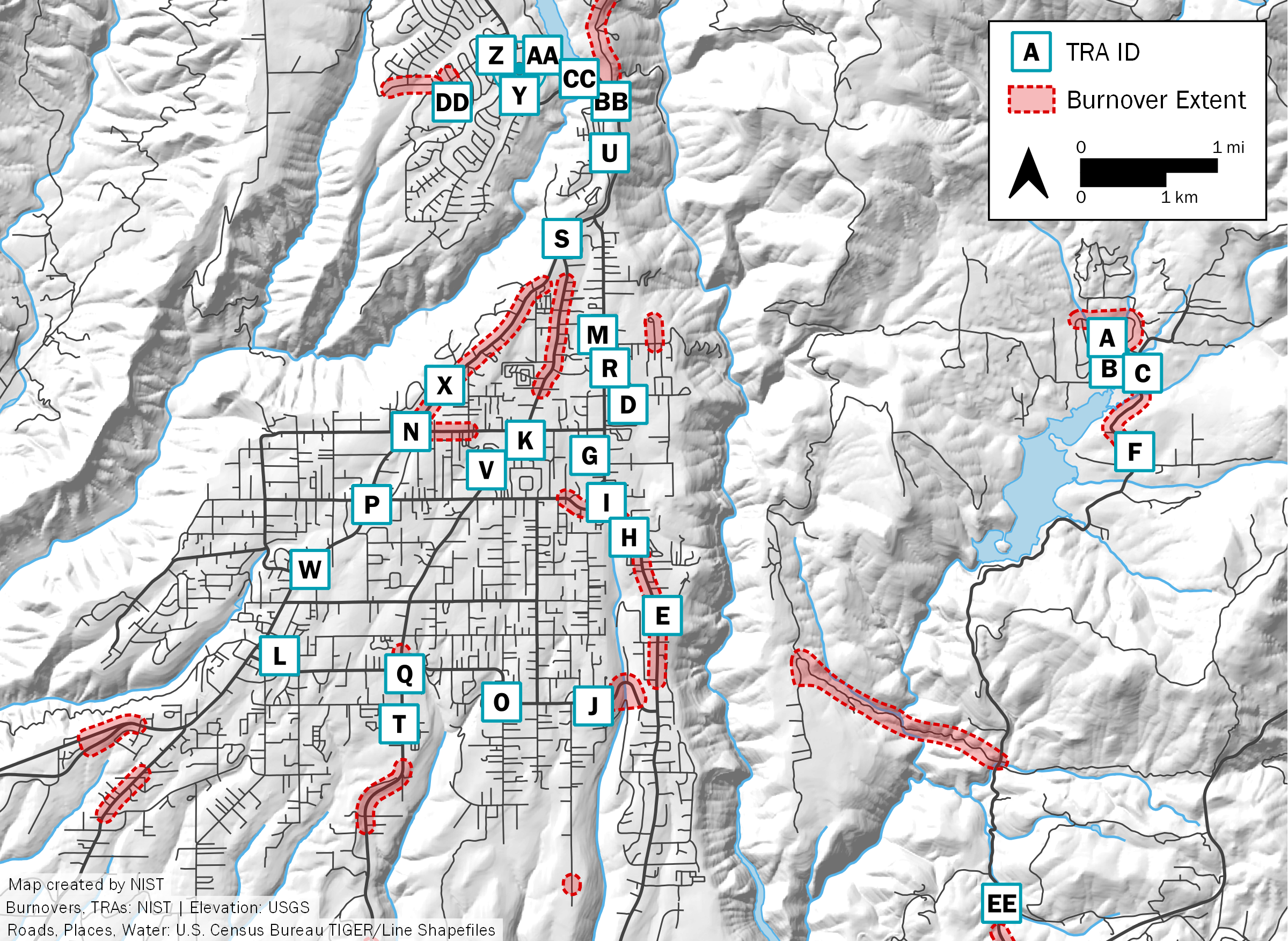NIST Issues New Guidance for Emergency Response During Wildfires
Lessons learned from the 2018 Camp Fire in California include strategies for protecting lives when there is not enough time to safely evacuate all residents.

The National Institute of Standards and Technology (NIST) has released a pair of reports that provide guidance for strengthening wildfire preparedness across the United States, including specific actions that communities can take to save lives when there is not enough time to safely evacuate all residents. NIST has also created a new website with guidance for making built structures and entire communities more fire resistant.
The reports are based on an analysis of the Camp Fire, which killed 85 people in California in 2018, and are the culmination of several years of research by experts at NIST and other federal and state agencies.
“The goal of these reports is to apply lessons learned from the Camp Fire in ways that make our communities safer in the face of continuing wildfire risks,” said NIST fire protection engineer Alex Maranghides, an author on the two reports. “Tragically, we are releasing these reports in the aftermath of the fire on Maui Island in Hawaiʻi. Our thoughts are with everyone affected by this terrible event.”
The Camp Fire Case Study Report
The Camp Fire began in Northern California’s Butte County on the morning of Nov. 8, 2018. It spread quickly through the communities of Pulga and Concow and slammed into the town of Paradise a couple of hours later.
More than 40,000 people attempted to evacuate, but they had little time to escape. Heavy traffic combined with deteriorating conditions to produce widespread gridlock. Hundreds of residents experienced a dangerous situation known as burnover, in which fire moved through their locations and exposed them to hazardous conditions. All of this took place in a region that had done advance planning for wildfires.
“The Camp Fire showed us what can happen to a prepared community when there is not sufficient time to evacuate,” said Maranghides.
Shortly after the fire subsided, NIST worked with the California Department of Forestry and Fire Protection (CAL FIRE), the Federal Emergency Management Agency’s U.S. Fire Administration, and the town of Paradise to collect data about the disaster. NIST experts then used that data to build an in-depth case study whose lessons could improve preparedness for wildfires everywhere.

“Evacuations are critical, and seconds count when wildfire threatens. Early and timely notification to the public is critical for survival,” said Steven Hawks of CAL FIRE, a co-author of the case study. “It is important to learn from what occurred during the Camp Fire and use this knowledge to ensure communities are more prepared in the future.”
A new report, A Case Study of the Camp Fire: Notification, Evacuation, Traffic, and Temporary Refuge Areas, meshes 2,600 observations and data points with the timeline of the spread of the Camp Fire to examine how first responders performed lifesaving actions during the historic blaze.
“The coordinated effort among firefighters, law enforcement and other first responders saved thousands of lives. Their actions are especially highlighted by 198 specific rescue events that we were able to document,” said NIST researcher Eric Link, a co-author of the study.
The losses could have been exponentially greater if not for the actions of emergency personnel. In addition to clearing roads and rescuing civilians from buildings, first responders quickly created 31 outdoor shelters known as temporary refuge areas that accommodated more than 1,200 people.
The ESCAPE Report
In addition, NIST researchers and their colleagues distilled the lessons from the Camp Fire into a second report that provides general guidance on wildfire response and makes it easier for communities to apply the research findings. The WUI Fire Evacuation and Sheltering Considerations: Assessment, Planning, and Execution (ESCAPE) report helps communities develop advance plans and process new information during wildfires, all while considering a community’s resources and conditions.
Based on both the pitfalls and successes of Paradise’s emergency response, the authors of the ESCAPE report suggest that evacuation is not a universal solution. Under conditions where there is not time for everyone to flee, it may be better for residents to shelter in their community at a designated safety zone. Ideally, these shelters would be systematically placed and maintained beforehand, so that they are safe and easy to access throughout a community, Maranghides said.
ESCAPE recommends that city officials establish several metrics to gain a comprehensive understanding of their community’s emergency response capabilities. One of the most important metrics is the time it takes to get everyone out of town, a number that can be estimated using evacuation drills and traffic models.
Clocking evacuation times in advance will allow officials to make better decisions in emergency situations. If time permits, then a full evacuation might be in order. If not, then citizens may be directed to their nearest safety zones. The guidance also emphasizes the need for advance planning for the safe evacuation of critical care facilities and people with limited mobility.
“State and local fire service leaders and emergency managers need evidence-based guidance to make informed decisions and guide safe evacuations,” said Nicole LaRosa, who as senior policy adviser to the U.S fire administrator on WUI policies collaborated with NIST on the report. “This report applies research findings to on-the-ground practices that can save lives.”
The Hazard Mitigation Methodology Website
NIST has launched a new website intended to help community leaders and first responders in wildfire-prone areas make buildings and other structures more resistant to fire. The website is based on the Hazard Mitigation Methodology (HMM), which was developed by researchers at NIST, CAL FIRE and other agencies and organizations. While traditional strategies focus on hardening individual structures, the HMM takes a community-wide approach to addressing wildfire risks.
The new website, developed with input from the Consumer Product Safety Commission, includes an overview of the new methodology and its benefits, a guide to implementing the methodology, and drawings and plans that contractors can use to upgrade buildings and multibuilding parcels. The website also includes a list of federal and state grants available to assist communities in implementing the new methodology.
Together, the two reports and the website give communities important new tools for implementing proactive approaches to managing wildfire risks.
“There have been no resources like this for small and medium-sized communities in wildfire-prone areas until now,” Maranghides said. “Many communities don't have the tools they need to plan for large wildfires, but the ESCAPE and the HMM website provide new paths forward.”
Reports:
Alexander Maranghides et al. A Case Study of the Camp Fire: Notification, Evacuation, Traffic, and Temporary Refuge Areas (NETTRA). NIST Technical Note 2252. July 2023. DOI: 10.6028/NIST.TN.2252
Alexander Maranghides and Eric Link. WUI Fire Evacuation and Sheltering Considerations: Assessment, Planning, and Execution (ESCAPE). NIST Technical Note 2262. August 2023. DOI: 10.6028/NIST.TN.2262

